Single-mode fiber optic cables have radically changed modern communications by providing high-capacity data transmission over long distances. As single-mode fiber optics aids the evolution of modern technologies, there is an ever-increasing need to understand its role and structure. This blog intends to explain the specifics of single-mode fiber optic cables and demonstrate how these distinct features set them apart from other fibers. My intended outcome is for you to appreciate the impact single-mode fiber optic cables will have on global connectivity in the future while gaining a strategic understanding of these components, their use cases, and performance metrics.
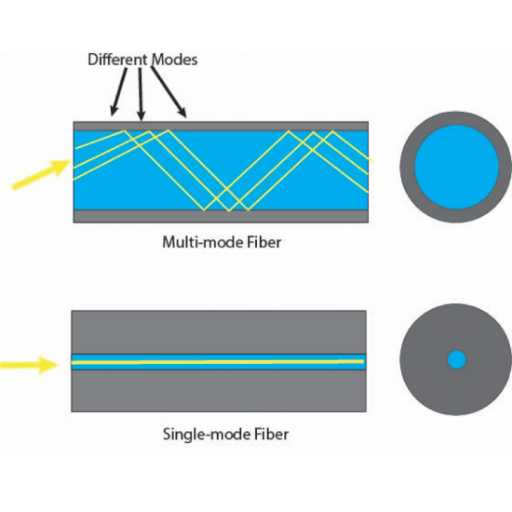
Single-mode fiber optic cables carry the highest capacity telecommunications/data channels over the longest distances. The thin core (approximately 8 to 10 microns wide) of this single-mode fiber optic type is what enables it to utilize only a single electromagnetic wave. This leads to no dispersion or data loss, allowing instantaneous data transfer at exceptionally high speeds. Because of these characteristics, single-mode fiber is used in telephone’s internet backbones and long communication distance cables.
Single-mode fibers provide some major benefits, such as long-distance data transmission with a small loss in data quality. Compared to multimode fiber, its core is thinner, which means less scattering of light, allowing for higher bandwidth capabilities. This makes single-mode fibers ideal for long international telecommunications as well as data centers. Additionally, data signals tend to degrade less with single-mode fibers, allowing for greater performance reliability over extended distances.
Wavelengths also determine the effectiveness and functionality of single-mode fiber optics. Single-mode fibers are constructed to work within a specific wavelength range from 1260 to 1625 nm. This span covers important operating windows, such as the O-band (1260–1360 nm), which is used for lowering chromatic dispersion, and the C-band (1530–1565 nm), which is known to have low attenuation and is widely used for dense wavelength-division multiplexing (DWDM) systems.
Light travels down single-mode fibers with insignificant losses and dispersion, which guarantees superb signal quality over extended distances. For instance, the attenuation in the C-band is known to reach as low as 0.2dB/km, which greatly increases the efficiency of high-speed data transmissions. The choice of wavelength also affects the fiber’s refractive index profile as well as other parameters like the cut-off wavelength, which determines the range of wavelengths that can propagate discordantly in single and multi modes.
Moreover, progress in fiber laser technologies improves the precision of light sources to single-mode fiber interfaces, which is increasingly useful for sophisticated applications like 5G Communications, submarine cable systems, and ultra-long-haul telecommunications. Network designers select precise laser wavelengths to guarantee optimal data transmission, minimal latency, and streamlined network performance.
Single-mode and multimode fibers are the two types of fibers used in telecommunications and data transmission, and each has unique attributes suited to specific needs.
Core Diameter and Light Propagation
Single-mode fiber has a core diameter of 8 to 10 microns, which is smaller than that of multimode fiber, therefore, only a single mode of light can propagate in it. This design minimizes signal degradation over long distances. As a result, single-mode fiber is most appropriate for high bandwidth, long-haul applications. In comparison, multimode fiber has a larger core diameter ranging from 50 to 62.5 microns, allowing multiple modes to propagate simultaneously. This leads to modal dispersion, or the deterioration of the effective transmission distance, which for multimode fiber is around 300 to 500 meters at higher speeds (10 Gbps).
Transmission Distance and Bandwidth Capabilities
Single-mode fibers are typically employed for long-distance greater than 40 kilometers links, as this figure can be reached with WDM (wavelength division multiplexing) techniques and lasers with good quality. These systems have better performance characteristics because they can carry higher wavelengths and have less signal interference. Multimode fibers are more economical for short distances (less than two km), such as for use in data centers or LANs, where the system cost is less than a one-gigabit-per-second (Gbps) data rate. Single-mode fibers are best for widely spread, extensive data transfer links such as those spanning states, cities, or countries.
Cost Considerations
The cost structure of single and multimode fibers varies, owing to their constituent parts and the use for which the systems are intended. Single-mode systems have high impact and precision optical parts and transmitters, to the single bestowed system costs on installation and components, but enables gigabits per second. These systems are bound by performance metrics owing to the LED source and low-precision parts used in the multimode system, which lowers the installation and component costs.
Single-Mode vs Multi-Mode Fiber Optic Cables
Single-mode fiber is best suited for 5G backhaul networks, overseas communication systems, and metropolitan area networks (MANs) due to its long-haul scalability and great long distance performance. On the other hand, multimode fiber is extensively used in business campus networks and storage area networks (SANs), where distance and cost are the most important factors.
As noted, single-mode and multimode fibers have distinguishing purposes; the choice of single-mode or multimode fiber optic cables lies in the requirements of the network in terms of distance, bandwidth, expansion, and budget. Continuous improvements in fiber optic technologies are further increasing the functionality of both types of fiber in modern communication systems, providing flexibility to adjust as network requirements change and expand.
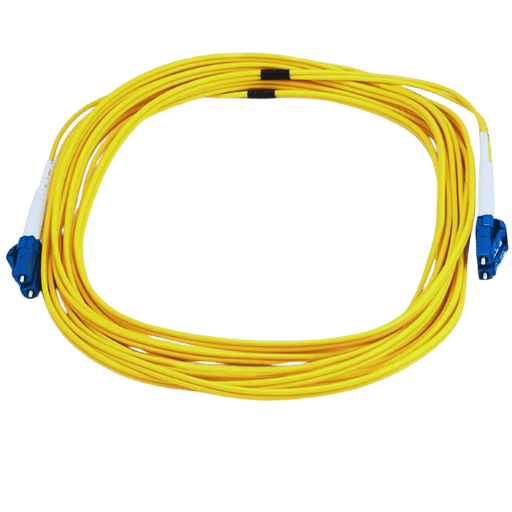
Greater Bandwidth
Single-mode fibers are built to carry light down the fiber alone, without other modes of light present. This is done using light more efficiently than in multimode fibers, resulting in higher bandwidth, making single-mode ideal for applications that rely on extensive data transmission such as telecommunications. Research suggests that single-mode fiber can sustain a bandwidth capacity of more than 10 Gbps over several kilometers.
Extended Transmission Distances
Single-mode fiber has a core diameter of approximately 9 microns, which results in minimal signal degradation over long distances. This feature allows transmission ranges of 80 kilometers or more with ease and without the use of signal boosters, unlike multimode fiber.
Reduced Signal Loss
Single-mode fibers incur smaller levels of modal dispersion, which supports maintaining strong signal levels over large scales. The attenuation for single-mode fiber is around 0.4 dB per kilometer for 1310 nm wavelengths and 0.25 dB per kilometer for 1550 nm wavelengths.
Future-Proofing Capabilities
Single-mode fiber supports future technologies like Dense Wavelength Division Multiplexing, which allows multiple wavelengths of light to transmit through a single fiber. This promotes ease of scalability for future network upgrades without the need for complete overhauls.
High Signal Quality and Accuracy
The precision of single-mode transmission minimizes interference and crosstalk, resulting in highly accurate signals, which is especially beneficial for telecommunications, medical imaging, and scientific research.
Smaller Cable Size
Single-mode fibers are less thick in the core, and therefore, their cables can be compacted into a smaller spatial arrangement. This characteristic is particularly useful in high-density installations or in areas where space is at a premium.
Greater Reliability In Harsh Environments
Single-mode cables are often constructed to endure harsh environments such as extreme temperatures, electromagnetic interference, and mechanical stresses, making them applicable for critical military and aerospace purposes.
Single-mode fiber is the clear candidate for fulfilling long-range and scalable requirements because of the aforementioned features. They are also efficient, reliable, and adaptable, making them meet the sophisticated standards required by modern communication infrastructures.
Single-mode fiber stands out from the rest as it offers the most bandwidth and data transmission. Modern, single-mode fiber is the optimal selection for contemporary high-speed networks. Unlike multi-mode fiber, single-mode fiber has a smaller core diameter of approximately 8 or 10 microns, which helps lower modal dispersion while transmitting light. The design of Single-mode fiber allows for extremely high data rates over long distances, exceeding 40 kilometers without having the requirement of signal boosters or repeaters.
Single-mode fiber is epitomized with low attenuation and a typical loss rate of 0.4 dB/km at 1310nm wavelength and 0.3 at 1550nm. These attributes are crucial for assuring dominance signal strength. In addition, configs tend to outperform over a long distance. The capability of handling substantial volumes of data while maintaining low latency illustrates the increasing demands of 5G networks, international submarine cable systems, data centers, and single-mode fiber.
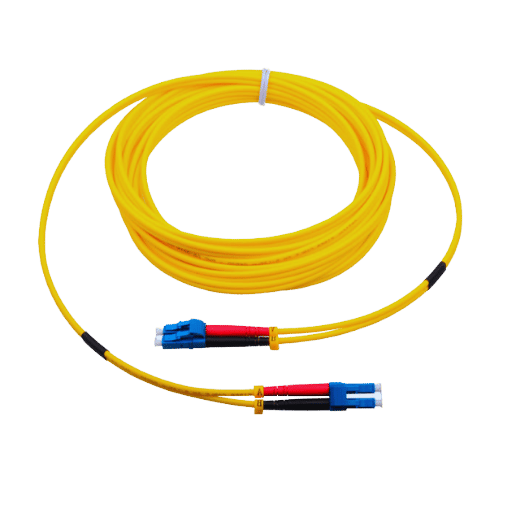
Single-mode fiber employs a variety of optical connectors to maximize signal transmission while minimizing loss. Some of the most popular connectors and their description and technical details follow:
1. LC (Lucent Connector)
The single-mode fiber laser employs the LC connector, which is a 1.25 mm ferrule and a highly compact latching type that is quite popular. Its size, greater than 0.50 m and fit for high density, allows LC connectors to be used in great numbers in data servers & telecommunication units. In addition, they have low insertion loss, which is less than 0.10 dB and greater than 0.30 dB, as well as low back reflection, which makes them usable even in high-precision networks.
2. SC (Subscriber Connector)
With a push-pull mechanism for ease and for a 2.5 mm ferrule, SC offers ease single mode fiber optic cabling installation, or SC connectors do the trick. Their quare form results in prior horizontal alignment to vertical mechanical one. Single-mode fiber optics are used in telecommunication facilities, cable TV networks, and passive optical networks (PONs). SC connectors usually have an insertion loss of about 0.20 dB.
3. ST (Straight Tip Connector)
Coupling by bayonet ST connectors have a solid physical connection in both industrial as well as networking domains. Congruent with a 2.5 mm ferrule, it is flexible and simple to use. The popularity of this type of connector in comparison to modern counterparts like LC and SC is lower, but it still executes its function for long-distance single-mode fiber applications in older infrastructures. The insertion loss of the connector is conventionally within 0.25 dB to 0.50 dB.
4. MTP/MPO (Multifiber Push-On)
MTP and MPO connectors are multi-fiber solutions aimed at ultra-compact areas. Capable of accommodating 12 or even 24 fibers in a single connector, these fibers were designed for high-bandwidth data transfers and intricate installations. They are widely employed in single-mode applications such as high-speed enterprise backbone cabling and hyperscale data centers. Depending on the configuration, the insertion loss of these devices may differ but usually falls between 0.35 dB and 0.75 dB.
5. FC (Ferrule Connector)
The FC connector design may not have been the earliest, but it remains relevant for use with single-mode fiber networks. Its threaded mating structure provides a secure connection, preventing disconnection due to vibrations. FC Connectors are mostly used in highly stable applications such as fiber-optic instrumentation, which has an average insertion loss of 0.30 dB per connector.
These connector options cater to diverse applications and requirements in single-mode fiber systems, balancing precision, durability, and efficiency. The choice of connector is determined by criteria such as performance accuracy, the condition of the environment, and the density of installation.
In fiber optic systems, patch cables provide dependable connections between varying constituents of the network. As I understand, these cables assist in preserving the quality of various signals while reducing loss, thus maintaining the performance of the network as a whole. Patch cables are indeed essential for every reliable and effective fiber optic network due to their versatility in configuration, their support of high-speed data transmission, and their minimal effort to adapt to different setups.
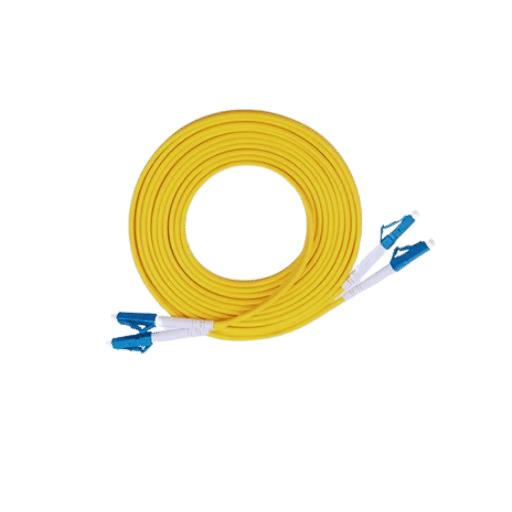
In the spectrum of single-mode optical fibers, OS1 and OS2 represent two classifications with specific attributes and applications. Their primary differences lie in construction, attenuation, and performance characteristics.
Construction
OS1 Fibers are usually tight-buffered and used indoors. This includes enterprise networks as well as data centers. They have an easier, single-mode fiber cable backbone installation option. Their further use comes from their durability that is provided by the tight-buffered design along with short-distance installations.
OS2, on the other hand, refers to fibers that are optimized for outdoor or long-distance loose tube applications. These cables are often used in underground as well as aerial installations. Furthermore, they are also used across metropolitan areas with the added benefit that the loose-tube design protects the optical fibers from temperature fluctuations and moisture.
Attenuation
A defining factor of OS1 fibers comes from their proneness to signal loss over distance. Their attenuation reaches 1.0 dB/km at 1310 nm and 1550 nm wavelengths. This is much greater than OS2 fibers, whose signal loss is only approximately 0.4 dB/km at the same wavelength. The OS2 fibers are more useful for users as they can transmit data over greater distances with minimal signal loss.
Operating distance and performance
OS1 fibers are designed for shorter range applications, usually up to 2 kilometers, while maintaining dependable performance. In comparison, due to the lower attenuation in OS1 fibers, they are more suited for these situations when needing reliable performance at a shorter distance.
With lower attenuation, OS2 fibers are well-suited for transmission over distances greater than 10 km, making them ideal for long-haul, high-capacity networks.
Application Scenarios
The use of OS1 is more advisable for indoor environments where the distances between network components are relatively small and there is little concern over environmental protection.
OS2 is more appropriate for outdoor use, as well as for long-distance optical links, where lower attenuation values and strong cable builds are essential for sustaining network reliability and performance.
Compliance Standards
Both OS1 and OS2 comply with international standards under ITU-T G.652. However, it is more common for OS2 fibers to comply with G.652.D, which has additional specifications like higher bend radius and attenuation, such as lower water peak attenuation.
By OS1 and OS2 differ have been explained above ensures that the most suitable fiber type is chosen considering application requirements, environmental factors, and network design stipulations. By taking advantage of the characteristics of each type of fiber, network operators can maximize the performance achieved to the costs incurred.
While selecting OS2 single-mode fiber, keep in mind these primary key aspects:
Application Requirements
Due to its low attenuation and ability to support wavelengths up to 1550 nm, OS2 fiber is ideal for high-speed data transmissions over long distances. It has dielectrics that allow for aerial and underground outdoor installations.
Environmental Conditions
Check if the fiber is rated for the exposure conditions like temperature, moisture, and mechanical stress. OS2 fibers usually have robust outer coatings that do withstand external environments.
Compliance and Compatibility
Make sure the fiber supports the correct standards, like ITU-T G.652.D, and make sure it does not collide with other components of the network and infrastructure built previously.
Budget and Scalability
Although OS2 fiber comes at a higher cost than most models, the fact that it can support structure expansions and fast great quality network in the future means cost effectiveness long term.
With the considerations above, you can determine the most appropriate OS2 single-mode fiber to provide the required performance and reliability for your network.
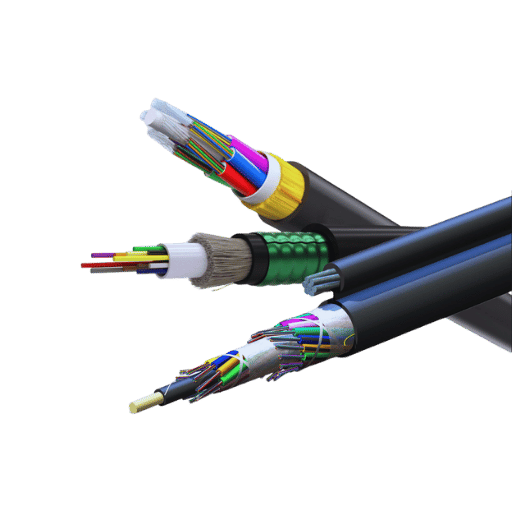
Data centers commonly use single-mode fiber due to its capability for high-speed, long-distance transmissions with minimal signal degradation. Connecting SANs and high-performance computing clusters, as well as cross-connecting large-scale facilities, are some of the applications for single-mode fiber. Its low attenuation rate and communication bandwidth capability make single-mode fiber optimal for modern data centers that require reliable operations. Moreover, single-mode fiber also helps in the construction of future-proof data centers by supporting advanced networking standards and technologies.
Single-mode fibers have served the needs of long-distance communication ever since they evolved due to the low signal attenuation and distortion fibers experienced while transmitting data over large distances. This is made possible by the lower core diameter of single-mode fibers, which allow light signals to take a single pathway, eliminating modal dispersion. Utilization of dense wavelength division multiplexing (DWDM) also improves its efficiency since it allows multiple data streams to be sent at the same time on different wavelengths, thus further increasing bandwidth.
Single-mode fiber systems have data rate capabilities of greater than 400 Gbps, and with modern advancements, possibilities of terabit-speed networks are within reach. These fibers are most commonly used in underwater cables that span for thousands of miles, interconnecting continents and supporting global communication. An example is the MAREA transatlantic single-mode fiber cable that spans over 4000 miles and boasts a record capacity of 200 terabits per second.
Moreover, single-mode fibers are crucial telecommunication backbones and intercontinental networks due to the low latency and high transmission integrity they offer. The advent of 5G and the proliferation of ultra-broadband internet have solidified single-mode fibers as the communication infrastructure backbone. The characteristics of single-mode fibers make it a necessity for meeting the global data traffic increase.
The advantages offered by fiber optic-powered high-speed internet have transformed numerous industries and business sectors across the board. Residential users can achieve 1 Gbps of transmission speed, while enterprise-level users can access significantly higher speeds. This unrivaled bandwidth capacity enables high-speed data transfers in line with seamless streaming, latency-free online gaming, and efficient handling of cloud computing and remote collaboration.
Moreover, fiber optics outperform traditional copper wiring concerning susceptibility to electromagnetic interference, leading to a more stable and reliable connection. More recent data confirms that fiber networks can reduce latency to as low as 1 millisecond, proving ideal for use in emerging technologies like telemedicine, autonomous vehicles, and virtual reality applications.
Lower maintenance costs and enhanced network uptime achieved through the reliability of fiber infrastructure also boost businesses’ effectiveness. Enterprises highlight the critical need for robust and reliable connectivity solutions to reduce the average downtime costs of $5600 per minute. Enhanced spending from united businesses drives a 24-fold boost in global device traffic expected by 2030 alongside continuous advancements of 5G and IoT fiber networks.
High-speed internet, coupled with single-mode fiber optic cable, can reach speeds of 10 gigabits per second. This showcases the importance of fiber optic networks in streamlining economic development as well as closing the gap of inequality in the digital world. From improving digital inclusion in neglected regions to catering to the requirements of smart city programs, the demands of our time are fully met with single-mode fiber optic cable.
A: Single-mode fiber is designed for the propagation of a singular mode of light and further has a lesser core diameter (usually 9 microns) than multimode fiber cable (50 or 62.5 microns). The greater distance over which single-mode fiber can transmit data is because lower attenuation and dispersion is noted, making it ideal for long distance and high-bandwidth communications.
A: A single-mode fiber’s core diameter is around 9 microns, while the cladding’s diameter is approximately 125 microns. The single mode of light mitigates the dispersion and increases transmission distance, hence granting the name single mode fiber.
A: The single-mode fiber usually works with two main wavelength ranges: 1310 nm and 1550 nm. The range of 1550nm is strictly avoided for short communications due to high attenuation and decreased communication quality, whereas it is the best choice for long-distance transmission. This is perhaps understated for lesser distance communications; moreover, lower attenuation is even found in mid-range distance telecom.
A: OS2 SMF (single-mode fiber) is low water peak fiber defined as meeting G652D of an ITU-T standard. It provides better performance over a larger scope than the standard single-mode fiber. Along with the 1383 nm vicinity of OS2, SMF also holds lower attenuation with a water peak band reaching from around 1260nm up to 1625nm, making it better than other single-mode fibers.
A: Armored fibers, which have a protective metal layer, clad fiber offers several advantages for outdoor fiber installations: 1. Enhanced protection from rodents, crushing, and other environmental hazards 2. Greater tensile strength, making installation easier and more durable 3. Reduced moisture ingress, making the cable more durable 4. Increased lifespan of the cable in harsh outdoor conditions These attributes make armored fibers ideal for direct burial cables and more advanced outdoor scenarios.
A: Quadruply clad fiber is a specialized type of single-mode fiber that features four layers of cladding around the core instead of the typical single cladding layer. The advantages of quadruply clad fiber are: 1. Enhanced bend insensitivity allowing for tighter bends without significant signal loss 2. Improved overall performance in challenging installation environments 3. Advanced signal attenuation in complex network designs 4. Greater maneuverability of the cable regarding its installation and routing
A: The operation of a fiber optic switch includes the interconnection of several optical fibers into a single system. A switch with a single-mode fiber interface usually operates at a wavelength of 1310 nm or 1550 nm. These systems use MEMS (microelectro-mechanical systems) or liquid crystal technology to switch light from input ports to output ports without performing optical-electrical-optical signal conversion. This form of switching allows corpuscles to be transmitted and retains the advantages of single-mode fiber like low attenuation, high-speed data rate, and wide bandwidth.
A: The primary differences between single-mode and multimode fiber patch cables are as follows: 1. Core size: Single mode has a smaller core of 9 microns in contrast to 50 or 62.5 microns for multimode. 2. Distance: Single-mode can transmit data over much longer distances. 3. Bandwidth: Single-mode offers higher bandwidth capabilities. 4. Light source: Single mode uses laser diodes, while multimode often uses LEDs 5. Cost: Single-mode components are generally more expensive. 6. Applications: Single mode is used for long-distance and high-bandwidth applications, while multimode is more common in shorter-distance and lower-bandwidth scenarios.
A: Depending on the wavelength and the particular standard being adhered to, the maximum attenuation for single-mode fiber optic cable will change. In general, the maximum attenuation values for single-mode vs multimode fiber optic cable are: 1. 0.4 dB/km (typical) and 0.5 dB/km (maximum) at 1310 nm 2. 0.2 dB/km (typical) and 0.3 dB/km (maximum) at 1550 nm. These values are based on industry standards such as ITU-T G.652.
A: As with single-mode fiber patch cables, a variety of optical fiber connectors are used, including 1. LC (Lucent Connector) – A Small Form-factor Connector (SFF) widely used in high-density applications 2. SC (Subscriber Connector) – A push-pull-type connector with a 2.5mm ferrule 3. FC (Ferrule Connector) – A screw-on type connector mostly found in telecommunications and test equipment 4. ST (Straight Tip) – Bayonet-type connector frequently used in networking and closed-circuit television (CCTV) applications 5. MTP/MPO (Multiple-Fiber Push-On) – A high-density connector for multiple fibers employed in data centers. The selection of a connector varies depending on the specific application, compatibility with the equipment, and the installation needs.
1. Title: A Localized Surface Plasmon Resonance-Based Gold Nanoparticles Coated Unclad Single-Mode Fiber Optic Sensor
2. Title: Coherent probabilistic shaping QAM transmission with a quantum noise stream cipher: an experimental demonstration of 201.6 Gbit/s over 1200km of standard single-mode fiber
3. Title: Characterization of single-mode and multimode single-mode fiber optic sensors for the monitoring of steel rebar corrosion in NaCl and simulated concrete pore solutions